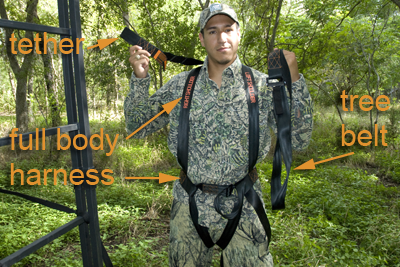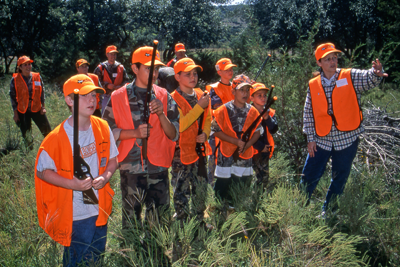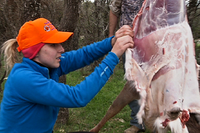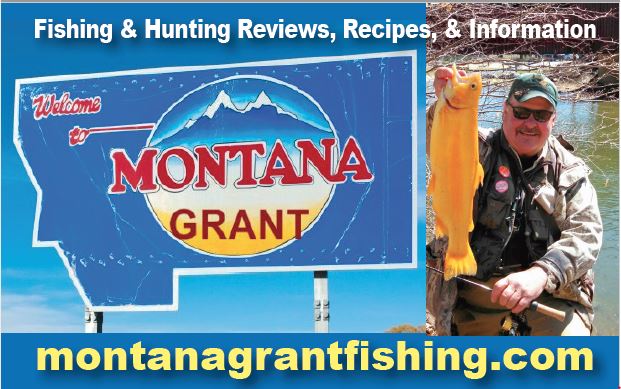
07 Jul HUNTER’S TRAIL !!!
Summertime is a great time to train future deer hunters. The outdoors is full of life, fun, and critters. This is a perfect time to introduce new hunters to the fold. Fishing Derby’s serve the same role for future fishermen.
Start by having the “rookie” hunters take a Hunter safety Course. This will get them started. Once they understand the rules and limits, they can start to master the skills. Find a public area, park, or your local hunting spot. Explore the area and figure out where you can teach different activities or stations. The “Hunter’s Trail” could be a day, weekend activity or involve camping.
Make sure that you plan for the hunters to have FUN!!! This means snacks, drinks, hats, and goodies. Theme your refreshments with hunting themes. Maybe the red Bug Juice is labeled, “Buck Blood”. Malty Ball chocolate candy could be deer droppings. Now you get the idea. Carry a backpack or create “caches” where the goodies can be discovered.
The second most important consideration is SAFETY! Make sure that you cover all the safety bases. Have a first aid kit, identify local dangers like poisonous plants, insects, or snakes. Have some communication and an emergency plan in mind. Generally, if you are prepared for these emergencies, they rarely happen.
Build your stations around Deer Hunting Skills.
Building a blind Most hunting accident happen from an elevated tree stand. Placing and using these stands requires training and practice. This station will demonstrate various stands. Secure roofing safety lines for the Rookies. Use climbers, hangers, and ladder stands. Ground blinds can be a part of this station. Have kids build a camouflage hunting blind.
Reading sign Deer tracks, rubs, bed, hair, scat,and scrapes all tell a story. Instruct future deer hunters about each of these. Once they understand their meaning, they can learn where, what, and how to hunt.
Blood Trails Create a blood trail. You can use real blood from a butcher or make a water-based paint substitute. The real blood could be used to demonstrate how to use Hydrogen Peroxide to identify real blood. Hunting is a “Blood Sport” and blood tells the hunter where the deer was hit, how it is traveling, and if the wound is fatal. Once you know these facts, you can plan the recovery tracking. Hair, bone chips, and tracks can also be used to make the trail more realistic. Hunting a blood trail is addictive and an important skill that hunters must be taught and learn.
Shooting Pulling triggers, releasing arrows, and hitting the mark are of great interest and importance to hunters. Archery, rifles, air rifles, shotguns. You could spend an entire day just on shooting skills, safety, practice, and competition. Each target should display vitals and kill shot locations. Wear florescent orange and eye protection when shooting. Using range finders is also a good idea.

Sharpening knives A fine edge on a good blade is an art. Teaching Rookies how to properly use a knife is vital. Safety is once again paramount. Let the Rookies use Fish Filet Gloves initially for protection. Making a walking stick or shooting stick could be a task.
Cooking deer meat Hunting is about food. Don’t kill it if you don’t grill it. Serve up a stew, jerky, or steak tidbits that the Rookies help to prepare. If they like to eat it, they will want to hunt it. Maybe teach some Camp Cook Skills!
Camouflage Not being seen, heard, or smelled are important deer hunting skills. Rookies can develop their own camo, descent or cover scent, and move quietly. Have a game or competition to evaluate these new skills.
Selecting a stand site Where to put a deer stand is important. Identify trails, foods, bedding areas, and escape cover. Look at topography and set up Trail Cams or use thread on trails to figure out when deer are passing through.
Survival Hunters may need to spend the night afield. Teach fire building, shelter making, purifying water, avoiding hypothermia, etc. Confidence afield makes for a more comfortable hunter.
Scents Cover scents, attractants, and the rut are important to deer hunters. Rookies have a nose for fun when smelling and understanding these various smells. Knowing how smell impacts the deer hunt are critical to tagging out.
Stalking How to quietly move through the outdoors needs to be taught. Proper footwear, paths, stealth, and motion are all important. Set up a stalk challenge where Rookies try to put the “Sneak” on you.
Game preparation/ Dressing a deer Once the deer is down, what do you do next? This takes guts and rubber gloves. State Agencies will supply roadkill critters for practice. You may also be able to get some deer or beef to butcher and prepare. Only one way to learn this skill.

Using optics Tuning a pair of binoculars, wearing and using them are skills you can teach. 10-42’s work well. Challenge the Rookies to locate distant marked objects at varied distances. Demonstrate cleaning, using, and storage.
Deer calling Learn to talk to the animals using Grunts, bleats, and rattling. Deer hear great and this can be a fun and noisy session.
Scavenger Hunt While the Rookies are trekking to different stations, have a 20 item Scavenger list. A few rocks, leaves, some trash, pictures or…etc. This will teach them continual observation skills. Plant some goodies like sheds, gear, or…
Depending upon your deer hunting areas, and strategies, you can come up with many more themes. Attention span is an issue with kids. More than 20-30 minutes a station is pressing your luck. 6-10 activities are a full day. Have snack time or travel time to the next station included.
Hands on and Physical activities are important. Learning must be interactive. Make sure that the Rookies are asking a lot of questions and engaged. You can’t “learn kids” you need to “create a situation where kids choose to learn”!
Instructors need to think like a kid or Rookie deer hunter. What types of things and activities would keep you interested? Invite, invest, and share ownership! This is a perfect time to involve all your deer hunting friends and camp buddies. Each has a specialty that they would love to share. Pick, plan, and choose based on your knowledge of your friends. Other parents can tag along for support and safety.
Hunting clubs, Game farms, and shooting ranges make great sponsors. These future Rookies will already know where to go for more contact. “Hunters Trails” lead to future membership and business. Years ago, I worked with the Gunpowder Game Farm in Baltimore County, Maryland. They were generous hosts to Hunter safety, school groups, and outdoor education. Each year they hosted our Environmental Science Schools Weeklong Outdoor Camp. 450 middle school students and parents enjoyed camping and outdoor adventures, fishing, hunting, and environmental training. The state and local fish and wildlife agencies were wonderful helpers at many of the stations.
Planning, Preparing, and Presenting a “Hunter’s Trail” is hard work. Find mentors and educators that have the skills and training. The biggest investment is time. The payback is huge. You are training a proper hunter for the next generation. The payback is HUGE!!!
The BEST Deer Hunters are not the ones that secretively fill a tag. The BEST Hunters are the ones that can teach others how to fill their tags.
Tag along the Hunters Trail now!
Montana Grant
For more Montana Grant, hunt him up at www.montanagrantfishing.com.


